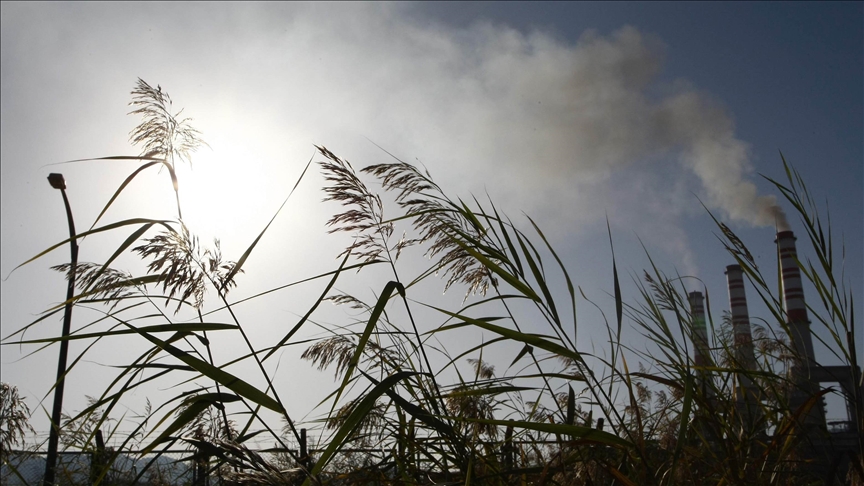Carbon dioxide levels rise by record amount in 2024: UN weather agency
Reduced absorption by forests, oceans raises fears of accelerating global warming

GENEVA
Carbon dioxide (CO2) levels in the atmosphere increased by a record amount to reach new highs in 2024, committing the planet to further long-term temperature rise, according to a report released on Wednesday by the World Meteorological Organization (WMO).
The WMO Greenhouse Gas Bulletin said the surge was driven by continued emissions from human activities, increased output from wildfires, and reduced absorption by natural "sinks" such as land ecosystems and oceans -- a combination that "threatens to be a vicious climate cycle."
From 2023 to 2024, the global average concentration of carbon dioxide rose by 3.5 parts per million (ppm), the largest annual increase since modern measurements began in 1957.
"The heat trapped by CO2 and other greenhouse gases is turbo-charging our climate and leading to more extreme weather," said WMO Deputy Secretary-General Ko Barrett. "Reducing emissions is therefore essential not just for our climate but also for our economic security and community well-being."
Growth rates of carbon dioxide have tripled since the 1960s, from an annual average increase of 0.8 ppm to 2.4 ppm between 2011 and 2020. In 2024, the global average concentration reached 423.9 ppm, compared with 377.1 ppm when the bulletin was first published in 2004.
The report said the record increase was mainly due to wildfire emissions and reduced carbon uptake by land and ocean systems during 2024, the warmest year on record, amplified by a strong El Nino event.
The phenomenon led to "exceptional drought and fires in the Amazon and southern Africa."
"There is concern that terrestrial and ocean CO2 sinks are becoming less effective, which will increase the amount of CO2 that stays in the atmosphere, thereby accelerating global warming," said Oksana Tarasova, a senior scientific officer at WMO. "Sustained and strengthened greenhouse gas monitoring is critical to understanding these loops."
Methane and nitrous oxide, the second and third most significant long-lived greenhouse gases, also reached record levels in 2024. Methane concentrations rose to 1,942 parts per billion, 166% above pre-industrial levels, while nitrous oxide climbed to 338.0 parts per billion, 25% higher than before 1750, according to the report.
The WMO said the findings aim to provide scientific input ahead of the UN Climate Change Conference (COP30) in Belem, Brazil, in November, where countries are expected to accelerate efforts to curb emissions.
Anadolu Agency website contains only a portion of the news stories offered to subscribers in the AA News Broadcasting System (HAS), and in summarized form. Please contact us for subscription options.




